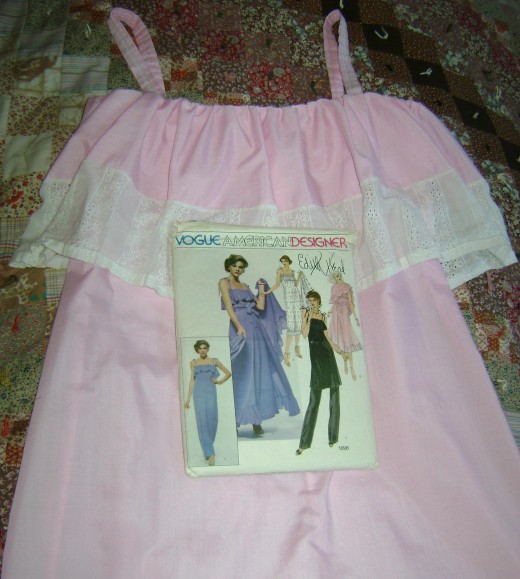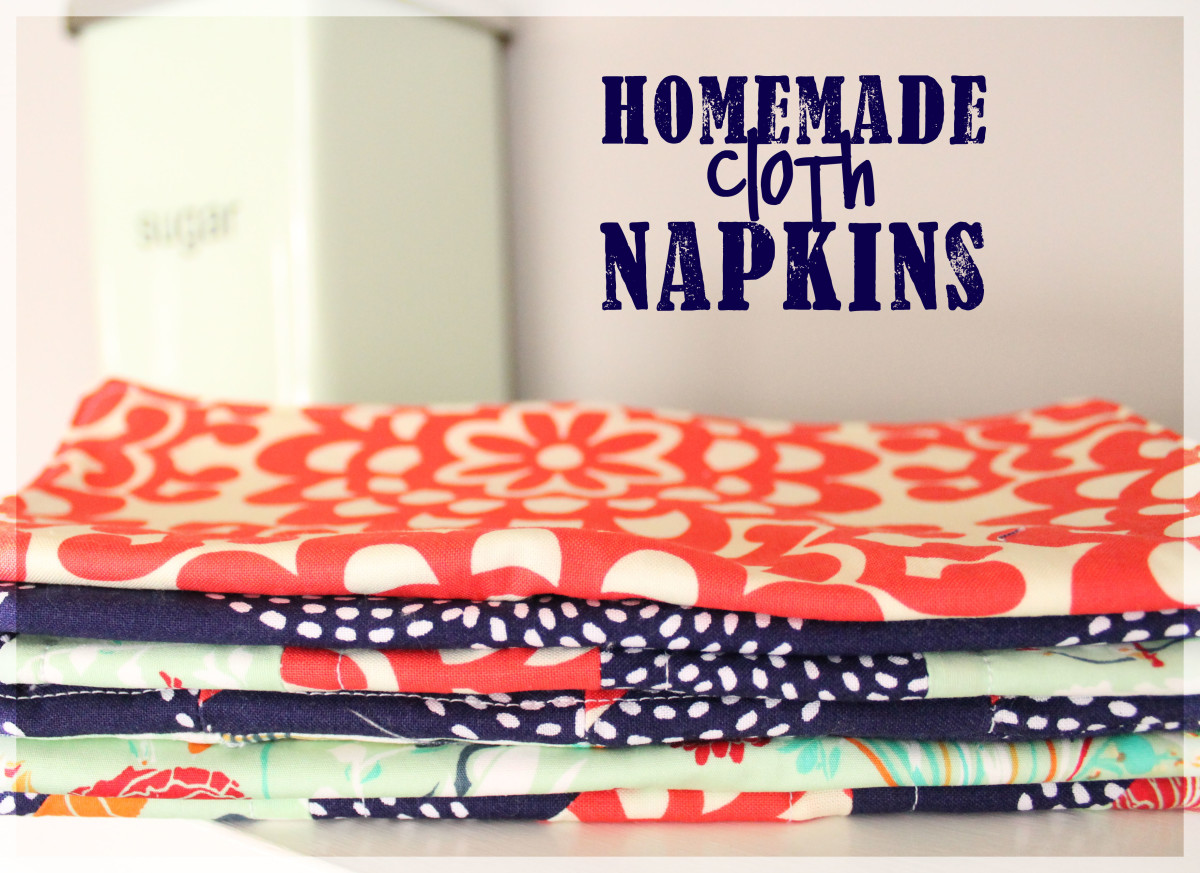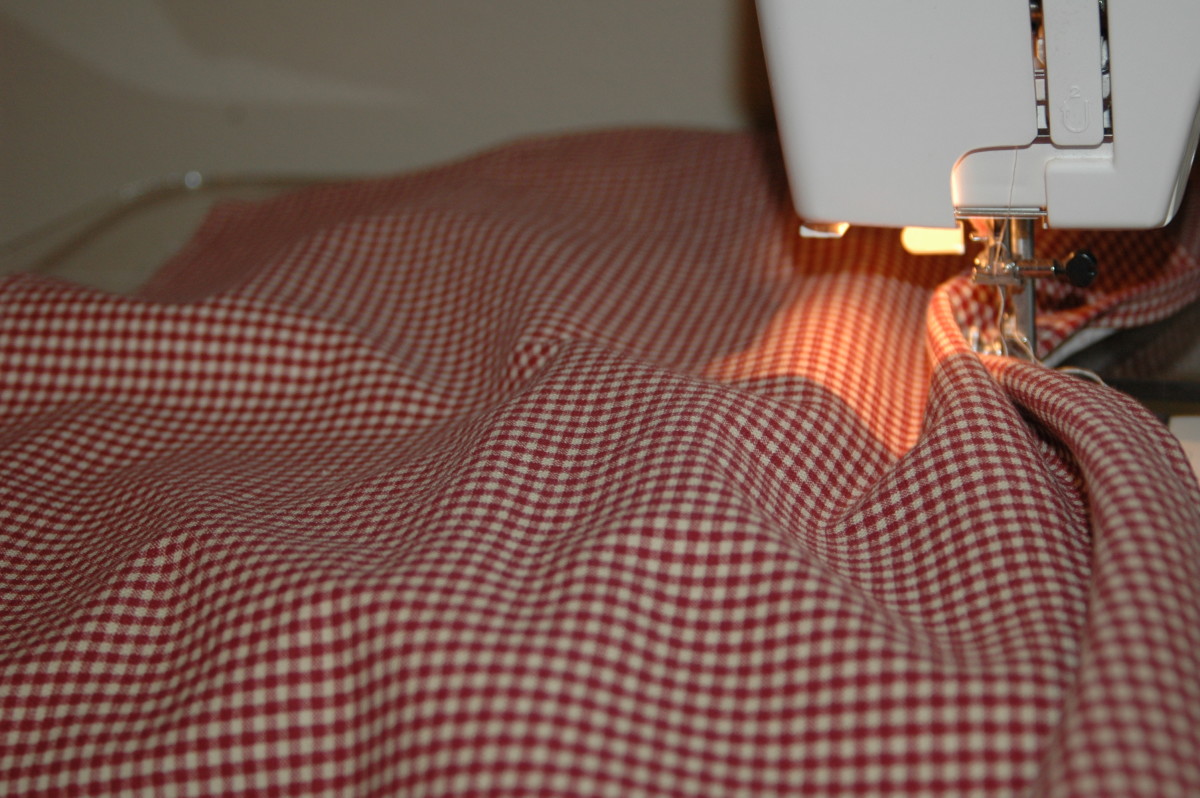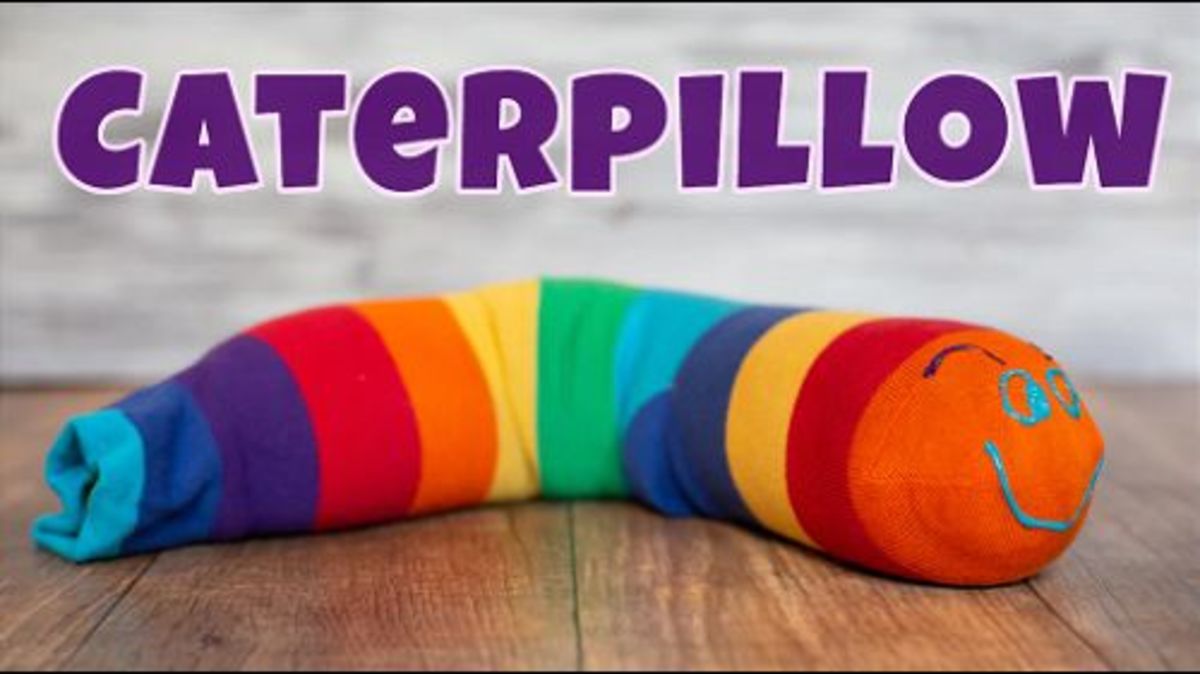Sew a Slip--It's Easy and Fun!
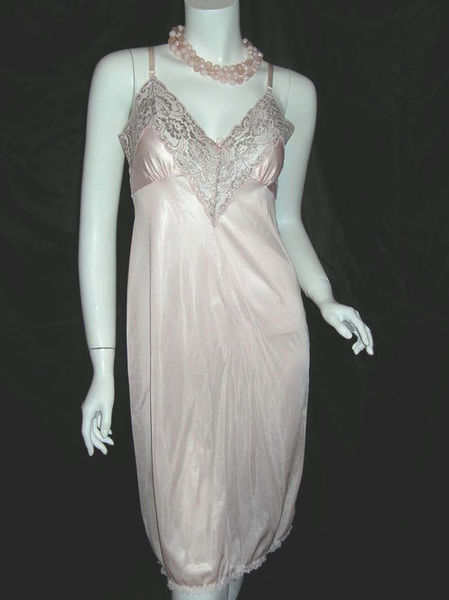
Slips are a Great Home Sewing Project
Sewing a slip is no more complicated than sewing a sleeveless dress. You control the materials, style, and trim. Create a lacy confection or a bare bones basic. Slips can be simple, designed to give a smooth line and provide opacity to sheer dresses. They may even be a dress --a classic slip dress. Most slip patterns would also make summer nightgowns when done in colorful fabrics.
First, decide what dresses will be worn with your new slip. For a sheath or bodycon dress, make a close-fitting slip in a smooth fabric. A sheer dress requires a matching or coordinating color of slip. Full skirts require full slips and formal gowns need a slip that supports the gown.
Now it is time to look for your supplies.
First Steps to Sewing a Slip
Choose a Pattern
There are many commercial sewing patterns available online, all suitable for sewing a slip at home. Folkwear 219 is a bias slip with camisole and panties. For a very basic slip with built-up straps, a Plain family offers Friends 204 in their collection of patterns for the Amish and other plain folk. The big pattern companies such as Vogue and Simplicity also carry some patterns for slips which should be available in a local fabric store. If you expect to do a great deal of lingerie sewing, save money by purchasing a pattern book that includes multiple sizes of everything from panties to nightgowns. Two excellent choices are: "Lovely Lingerie" from Martha Pullen, emphasizing heirloom embroidery and lace techniques, and "Beautiful Lingerie" from Kwik Sew, for a more modern look.
Take Measurements
Take body measurements (bust, waist, hip, and finished length) to determine your correct pattern size. With the pattern in hand, check the chart on the envelope back to determine the correct amount of fabric to purchase. Some slip patterns are for woven fabrics, but some may specify stretch knits only. Be sure to follow the fabric recommendations for your pattern, unless you are an experienced dressmaker who knows how to bend the rules.
Get Supplies and Fabric
Purchase lace trim, elastic, and other notions as needed for your style. Wide stretch lace, like that used in ready-to-wear lingerie, is available from sewing suppliers online and is an easy and professional way to finish the top or hem of a slip. Use cotton-wrapped polyester thread or a high-quality polyester thread (not dollar store thread) and be sure to get a package of machine needles appropriate for lingerie fabrics (small sharps for woven fabric, ball-point or stretch for knit fabrics.)
Quick Tip for Tricot
Remember that you can always find the right side of tricot fabric by looking at the curled edges. The edges curl toward the right side of the fabric. The same hold true for other single-knit fabrics, like jersey.
Special Concerns for Sewing Lingerie
Practice Sewing on Scrap Fabric
On a standard sewing machine, use a short stitch length on all seams as you follow the pattern directions for garment construction. Finish raw edges with a serger, if you have one, using wooly nylon thread in the loopers. Otherwise, consider using French seams for a clean finish and smooth line.
Machines and Feet
While a serger is handy for doing rolled hems, a standard sewing machine with a stretch or zig-zag stitch is all you really need. Special presser feet will make it easy to achieve the seams and finishes you need. A narrow hem foot will fold fabric for you before it goes under the needle. An edge joining foot helps keep two fabrics or lace trimmings lined up to be zig-zag stitched together. A satin stitch foot accommodates the thickness of machine embroidery as it goes under the foot.
Money-Saving Tip
Lace and netting are surprisingly durable, despite their delicate appearance. They often outlive the main fabric of a garment. Save these materials before trashing a worn dress or slip.
Using a single-edged razor blade or a surgical-style seam ripper, carefully remove lace trim from discarded garments to reuse. The netting in petticoats can be saved for costumes or formal slips.
Lingerie Sewing Poll
Would you sew a slip?
A Guide to Lingerie Fabrics and Fibers
Cotton is the staple fabric for everyday wear. It is breathable for healthy skin, sturdy for frequent washings, and available in economical packages. Woven cottons will wrinkle, however, unless blended with polyester or spandex. Select cotton for summertime comfort. For active sports, be sure cotton sports bras and bike shorts include spandex for support and good fit.
Silk is both beautiful and breathable. Although it looks delicate, silk is actually quite strong, even when wet. While most silk garments are labeled "dry clean only," this is not practical for most lingerie. Gentle hand washing in cold water should cause minimal shrinkage and preserve the bright colors of many silks. Roll wet garments in a towel to blot dry, then hang to finish air drying. Rayon, made from cellulose fibers, has properties similar to silk; however, it is not as strong when wet. Both silk and rayon are wonderful for special occasions such as honeymoons. Silk is cool in summer and warm in winter.
Nylon tricot lingerie wears almost forever. This synthetic fiber is strong, but it does not breathe and is not absorbent. Nylon tricot is a good choice for travel, since it dries fast after hand washing in a hotel sink. It is not ideal for exercise or for hot summer days. Nylon and other synthetic fibers are susceptible to oily stains, so be careful with cosmetics and lotions.
Acetate is inexpensive and long lasting. It is softer than nylon and not as strong. Acetate is intolerant of heat, so do not place in a hot clothes dryer. Nail polish remover (acetone) will dissolve acetate.
Lace fabric may be made of cotton, nylon, or polyester. It adds a special touch to trousseau lingerie and is often used to trim even everyday items. Be sure to choose soft laces; avoid anything scratchy. Lace is a pretty option for nightgowns, slips, and negligees. It is also available in bras and panties, but be sure to wear them only if the texture will not show through the outer garments. Nylon stretch lace is lightweight, comfortable, and pretty.
Suppliers of Lingerie Sewing Products
- Lingerie Fabrics, Bra Supplies, Lycra - Sew Sassy Fabrics
Sew Sassy Fabrics specializes in tricot, sheer, lace and elastic for lingerie, underwires, closures and accessories for making bras, and stretch fabrics with lycra® or spandex for swimwear and activewear. - WAWAK Sewing Supplies
This is where I got supplies when I worked in the bridal industry. More than 20,000 sewing items in stock and ready to ship. Zippers, Threads, Notions, Accessories and more! Fast Shipping, great service! - Swimwear & Lingerie Notions - Discount Designer Fabric - Fabric.com
Slip Dresses are Cute, Too
